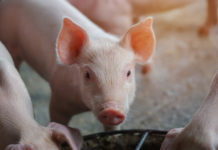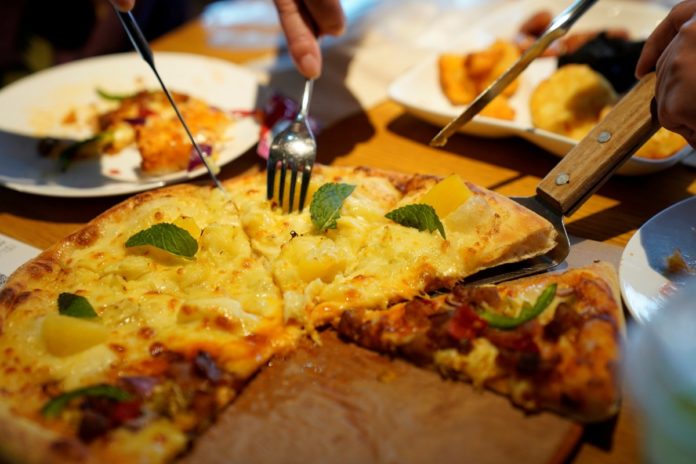As Malaysia blazes ahead to increase durian exports to China, unconventional creations such as durian pizza or durian hotpot may be the key to winning a growing market that has long been dominated by Thailand.
Malaysia’s farm sector has been abuzz in recent years about rising interest by Chinese consumers in the country’s famed durians.
The unseating of Barisan Nasional last May triggered a rethink of some belt and road mega projects, but Prime Minister Mahathir Mohamad’s Pakatan Harapan coalition government has courted Chinese demand for palm oil and durian, as it faces friction with European Union and others seeking to eliminate deforestation-linked product imports.
While many Malaysian growers have benefited from trade in fruit via Hong Kong, it is direct access to China’s multibillion-dollar durian market that is most highly prized. In August, Malaysia signed a protocol to export whole durians to China. This will expand its export offerings beyond frozen pulp and purée, and allow it to gain greater market share in China – possibly giving Thai producers, who have long dominated the durian trade, a run for their money.
Malaysia wants to sell the ‘Hermes’ of durians to China
Chinese authorities have allowed the import of whole, fresh Malaysian durians this year, as long as they are frozen at -80 to -110 degrees Celsius for at least an hour, and they are stored and exported at -18 degrees or colder. This requires farm-to-port refrigeration facilities.
Such a requirement might bring relief to the current tight supply-chain situation as Malaysia’s famous ripened durians have to be taken to market within days or be wasted.
Consumers may or may not benefit on future pricing, depending on how the durian trader-processors manage their stocks, and how picky buyers react to defrosted whole fruits.
DURIAN VS DURIAN PIZZAS
Malaysian farmers are reputed for bringing on new durian varieties – such as Musang King (fox king), Udang Merah (red prawn) and Black Thorn – to titillate the taste buds of connoisseurs to catch higher prices.
So careful are farmers with premium durians, every fruit is tied to the tree with a cord, so it does not fall and split open prematurely.
China’s insatiable appetite for durian swallows Malaysian tribal lands
Amid controversies about forests being cut down for durian orchards, big businesses want to get on the durian bandwagon, too.
One such recent deal features property tycoon Lim Kang Hoo, who is running his new durian plantations with several partners: Johor-based agri-forestry firm PLS Plantations Berhad, (beleaguered state-linked palm oil giant) FGV Berhad, as well as three China companies, Shanghai Greenland Group, ZTE Corp and Shanghai PTSKY.
Lim is the developer of the Iskandar Malaysia economic zone in Johor, which attracted heavy interest by Chinese property developers under the previous Najib Razak administration, as well as partnerships with the Sultan of Johor and state-owned enterprises.
According to local media, Lim’s Ekovest Group is the new owner of a bakery named The Loaf – which was formerly owned by Mahathir – as his firm eyes an entry into the food and beverage sector.
How might durian farms and a bakery fit into a Lim-FGV-China durian export agenda?
The value-added margins in durian processed products may be an answer. Malaysia’s Ministry of Agriculture noted last year that fresh whole fruit can fetch 40 ringgit (US$9) per kilogramme, while downstream durian products could earn about 1,000 ringgit (US$241) per kilogramme.
The arrival of unconventional dishes, such as durian coffee, durian bak kut teh (pork ribs cooked in broth, a popular meal in Malaysia and Singapore) and durian hotpot may have purists scratching their heads – but together with durian newbies, they would certainly reach for a durian ice cream, crepe, cake or puff.
Bangkok-based The Pizza Company has made a cheesy durian pizza; an offering other pizza outfits have dabbled in too. Might Lim’s The Loaf offer a durian pizza any time soon, perhaps for the China market? It may take longer for locals to bite. In the meantime, roti canai – a rich flatbread – with durian may be more marketable.
CHALLENGES FOR THE INDUSTRY
Farms and processing facilities are subject to audits by the China Certification and Inspection Company (CCIC) under the authority of China’s State Council.
While the contents of such audits are unclear at the moment, the big question is whether the CCIC can give assurance on limited pesticide use, and accredit the quality of certain types of durians, such as Musang King, which saw prices rise to 150 ringgit per kilogramme a few years ago.
Exporters are eyeing not just increased volume but also premium prices. According to official data, Malaysia produces 300,000 tonnes of durians annually. Premium-grade Musang King accounted for nearly one quarter of total production, and 17,000 tonnes of the premium durians were exported to China.
Malaysian durian lovers worry about price increases amid the spike in Chinese demand. And while the agricultural sector is keen to ramp up production, it is beset by capacity concerns regarding orchard development and management.
Rivalling Thailand’s dominance will be no mean feat. A look at recent trade data suggests challenges on the horizon – and down years can be rough. In 2017, Malaysia’s export value and quantity both fell 80 per cent, and prices only rose 2 per cent; while Thailand’s export value, quantity, and price declined 16 per cent, 14 per cent, and 1 per cent respectively.
Taking a broader view, the durian trade (measured by exports) to Hong Kong and China has fluctuated in a flattish trend from 2013 to 2018. But there was a good recovery across these metrics last year.
How fast will Thai and Malaysian durians push into second- and third-tier China cities for tourist interest and expanded demand? Will there be head-to-head competition for the existing market? Thai exporters may adjust by producing a ripened version.
In the meantime, Malaysians in China tell of a stronger push with apparent recruitment drives for the multilevel marketing of durians there. Hold your noses for more.


































